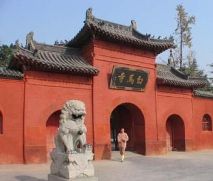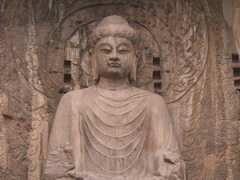Located in the central plain of China, Luoyang City is the pivot of the Chinese economic strategy that connects the  East and the West. As the gateway for entering China's Mid-West, it faces the Yellow River in the north and backs against onto Luoshui River in the south. With a history of nearly 5,000 years, Luoyang is one of the first batch of historical cultural cities in China, as well as an emerging industrialized city with rich resources, advanced culture, convenient transportation and competitive technological strength. It now governs one city, eight counties and six districts, with a total area of 15,208 square kilometers, including an urban area of 544 square kilometers. It has a population of 6,150,000, of which 140,000 live in the city. East and the West. As the gateway for entering China's Mid-West, it faces the Yellow River in the north and backs against onto Luoshui River in the south. With a history of nearly 5,000 years, Luoyang is one of the first batch of historical cultural cities in China, as well as an emerging industrialized city with rich resources, advanced culture, convenient transportation and competitive technological strength. It now governs one city, eight counties and six districts, with a total area of 15,208 square kilometers, including an urban area of 544 square kilometers. It has a population of 6,150,000, of which 140,000 live in the city.
Luoyang is a famous historical and cultural city and key tourist destination. The rise of the city can trace back to over 4,000 years ago, beginning from the establishment of the Xia Dynasty (21st- 17th century BC). After that, altogether 13 dynasties built their capitals here. Luoyang got the fame of "capital of poems", for it has been the gathering place for poets and literators; it is also known as "capital of flowers", for peonies prosper here.
Luoyang abounds in human culture sites. The Longmen Grottoes is one of China's big-three grottoes; the Baima Temple is China's first Buddhist temple set up by government; and the Luoyang Museum of Ancient Tombs is the largest group of ancient tombs in the world. In addition, there are a number of historical relics such as the Ercheng Tomb, the Baiyuan Garden and the Guanlin Forest. Natural scenery of Luoyang is equally attractive: the eight spots of Luoyang including the Tianjin Morning's Moon, the scenery of Longmen Mountain and the bell ring of the Masi Temple, differentiating in styles and getting visitors on the scoop. |
